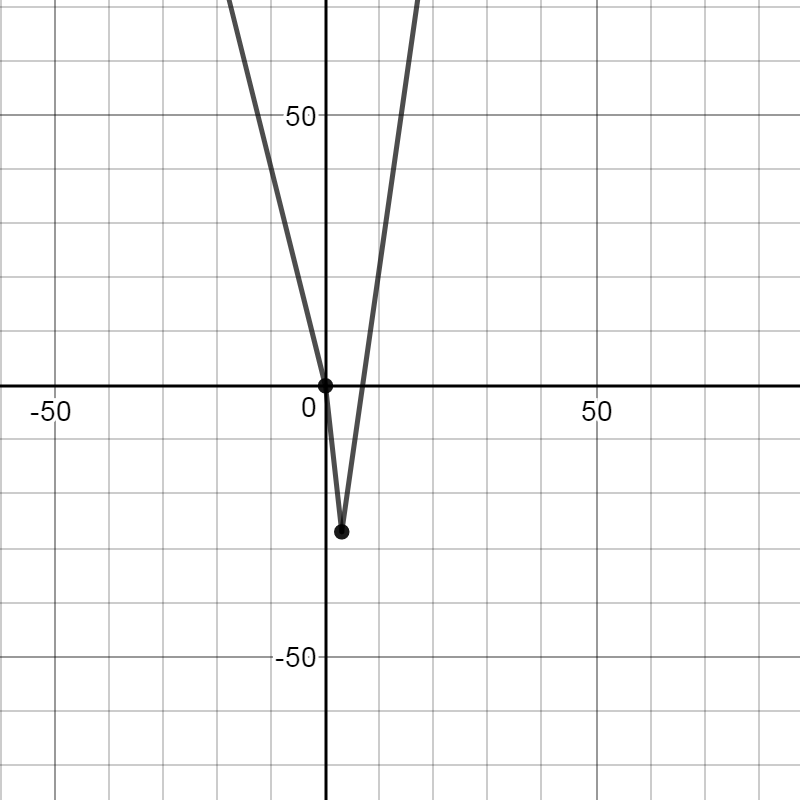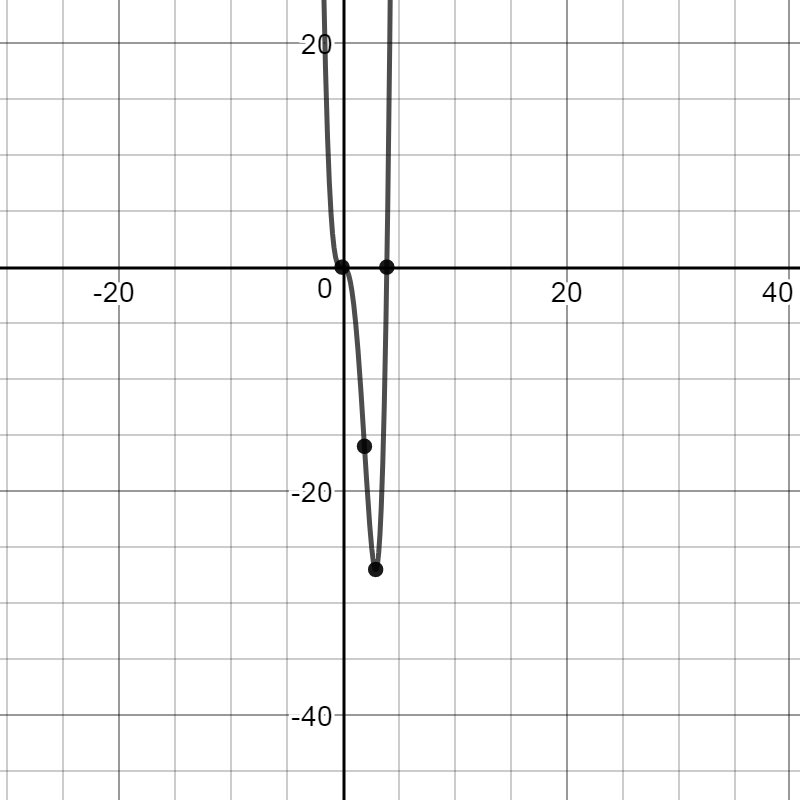How do you sketch the graph by determining all relative max and min, inflection points, finding intervals of increasing, decreasing and any asymptotes given #f(x)=x^4-4x^3#?
1 Answer
See below.
Explanation:
Asymptotes: None. Polynomials don't have (linear) asymptotes.
Intercepts
Analysis of
on
on
on
There is a relative minimum at
There are no relative maxima.
Before we look at concavity, here is the straight line sketch:

Analysis of
on
on
on
Inflection points are points on the graph at which the concavity changed. Therefore, there are inflection points at
The inflection points are:
(
Now that we have concavity, we can improve our sketch:

Here is Socratic's graph. (You can move it and zoom in/out. If you leave this answer and come back, the graph will reset to the original view.)
graph{x^4-4x^3 [-37.2, 35.86, -29.07, 7.48]}

